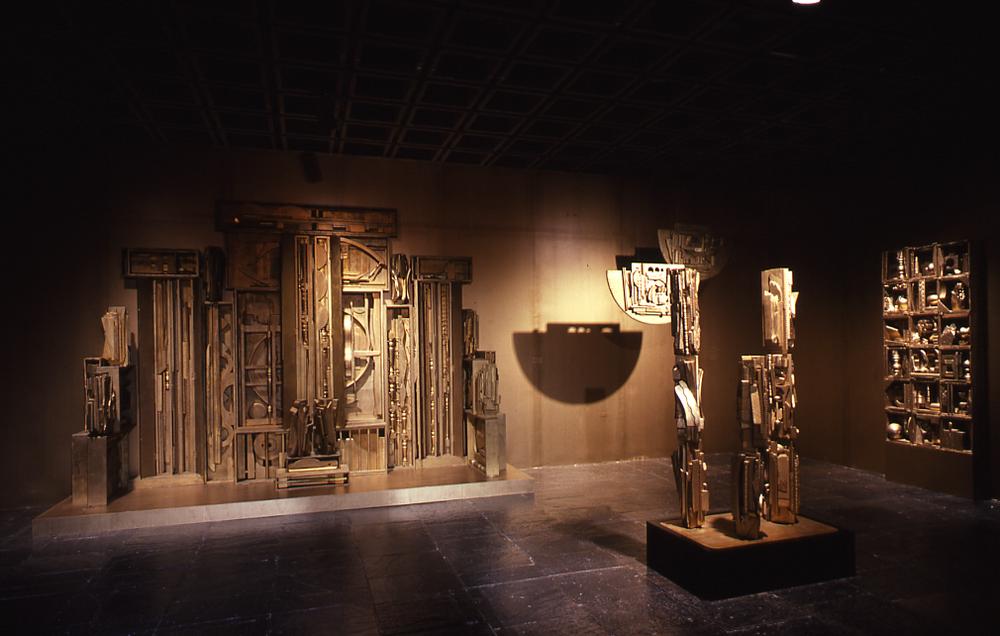Louise Nevelson. The Fourth Dimension
Louise Nevelson worked with architectural space to create environments she called “worldscapes.” In the mid-1950s Colette Roberts, director of Grand Central Moderns gallery in New York, invited Nevelson to stage four solo shows. With each installation the artist’s monochromatic wood sculptures increased in scale and density. The final exhibition, Moon Garden + One (1958), enveloped viewers completely within the artwork. Staging a dramatic scene, Nevelson mounted sculpture to the ceiling; completely covered a wall with a Sky Cathedral work, from which hinged doors hung ajar to create mysterious shadow play; and tightly arranged totemlike sculptures that obstructed movement throughout the dimly lit gallery. In addition to scale, depth, and a monochromatic palette—primarily black, white, or gold—Nevelson, the self-ascribed “architect of shadow,”1 used light and darkness as substance, creating the illusion of incomprehensible dimensionality. She believed her works could bring “the fourth dimension—or ‘elsewhere’—into the here-and-now of the third dimension.”2 As dealer Arne Glimcher described, “Nevelson sought to establish an unfamiliar landscape that would disorient the viewer and question the sufficiency of his perception. . . . This was a magic window that allowed the viewer to walk through into a private universe.”3
Martin Friedman, Nevelson: Wood Sculptures (New York: E. P. Dutton; and Minneapolis: Walker Art Center, 1973), 7. ↩︎
Louise Nevelson with Colette Roberts, in Laurie Wilson, Louise Nevelson: Light and Shadow (New York: Thames & Hudson, 2016), 185. ↩︎
Arne Glimcher, in Laurie Wilson, Louise Nevelson: Light and Shadow (New York: Thames & Hudson, 2016), 184. ↩︎
